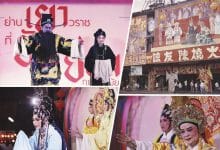Recognising genuine Thai Silk
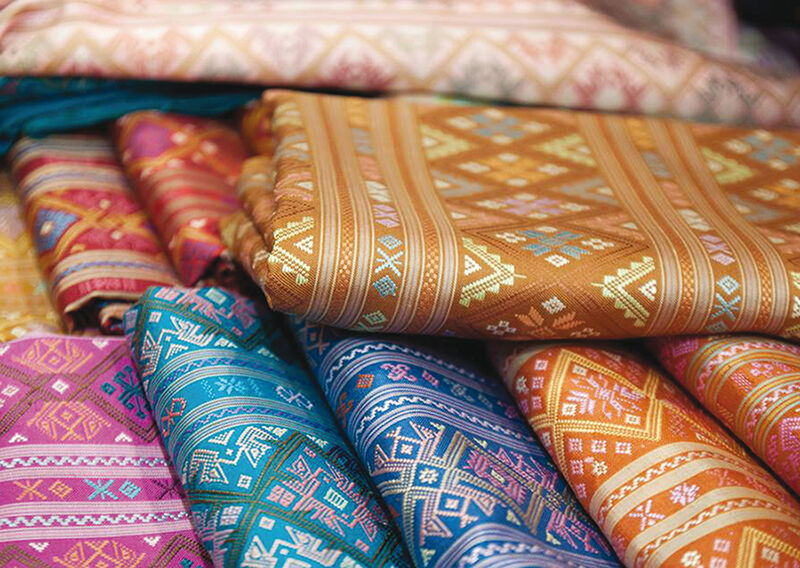
Imagine a fabric so lustrous it shimmers like liquid gold, a material so fine it has been coveted for centuries. Thai silk, with its rich history and intricate craftsmanship, stands as a testament to human ingenuity. Derived from the secretions of silkworms, this luxurious fabric has become synonymous with elegance and sophistication.
How Thai silk is created.
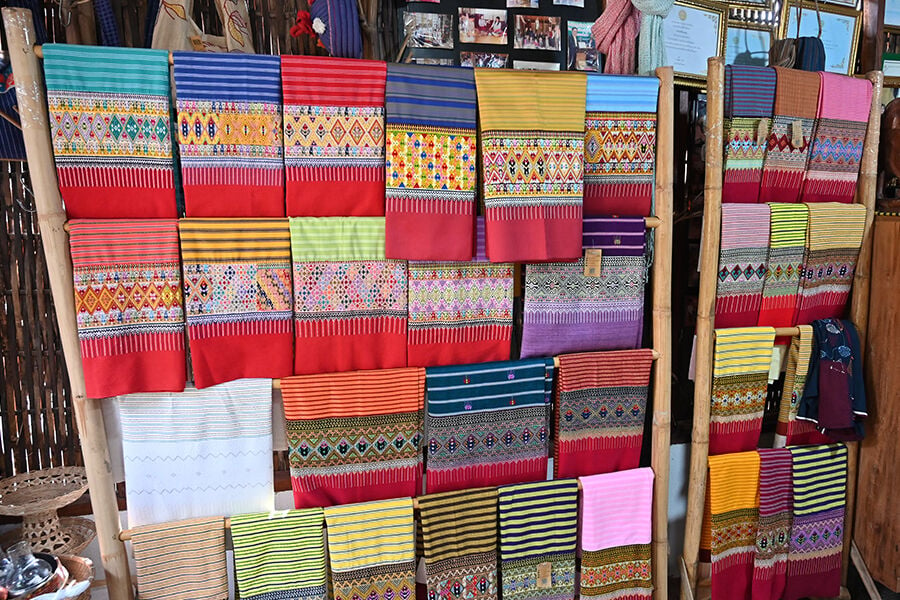
Thai sericulture: A quick overview
Thai fabric begins its journey with the Bombyx mori silkworms. These worms feed on mulberry leaves, producing cocoons of raw silk. The sericulture process in Thailand is hands-on, involving careful cultivation and harvesting. Farmers rear the silkworms, ensuring optimal conditions for cocoon spinning.
Silk farmers then boil the cocoons to extract the silk threads, a crucial step in Thai silk production. Each cocoon yields approximately 300–900 metres of silk thread. These threads are then spun into yarn, ready for dyeing and weaving.
Dyeing the yarn
Natural dyes play a significant role in Thai silk. Traditionally, artisans use colours derived from plants, insects, and minerals. This practice links modern silk with ancient traditions. The dyeing process requires precision, as the colour quality directly impacts the final fabric.
The dyed threads are hung out to dry naturally. Exposure to sunlight ensures the durability of the dye. Once dried, these threads are ready for weaving.
Weaving Thai silk
Weaving Thai silk demands skill and patience. Artisans use traditional looms to interlace the threads, creating various Thai silk weaves. The four main types include brocaded, dupioni, mudmee, and plain weave. Each type features distinctive patterns and textures.
Brocaded silk features raised patterns, the most complex and costly due to its intricate process. Dupioni silk is known for its rough texture and lustrous appearance. Mudmee silk involves tie-dye techniques, creating unique designs. Plain weave silk offers a simpler, smoother texture, often used for everyday garments.
Ensuring quality and authenticity
Quality control is essential in Thai silk production. Artisans inspect each piece meticulously, ensuring no defects. Authentic Thai silk must meet high standards. Buyers should look for certifications and purchase from reputable sources to confirm authenticity.
The combination of traditional methods, natural dyes, and skilled craftsmanship makes Thai silk a coveted fabric worldwide.
Types of silk fabric
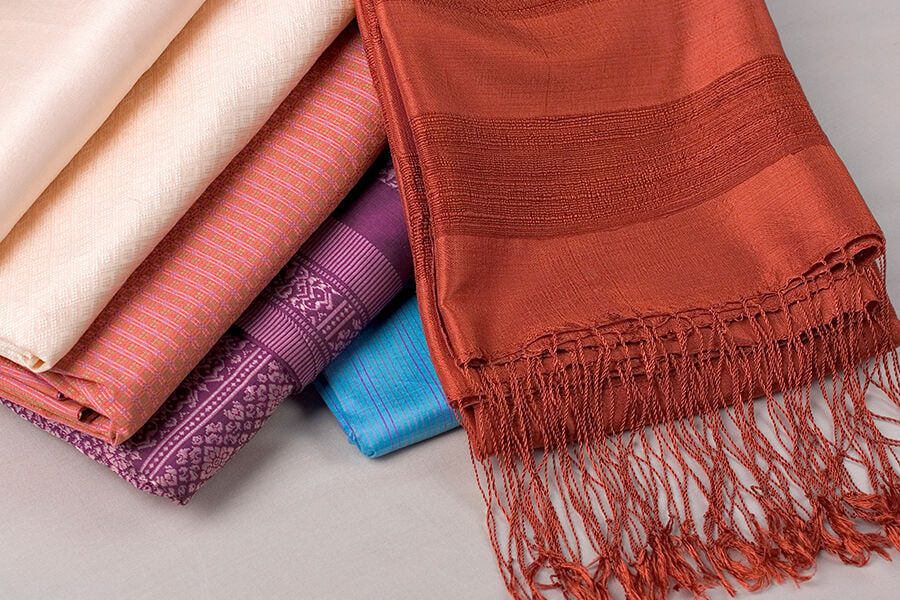
Brocaded Thai silk
Brocaded Thai fabric involves a complex weaving process. The fabric features a raised pattern, giving it an embossed look. Historically, weavers from Lamphun Province have created brocades for the Royal family. This type of Thai silk weave stands out for its intricate designs and high cost. Due to its complexity, brocaded Thai fabric is among the most expensive styles available.
Dupioni Silk
Dupioni silk is notable for its rough texture and slubs. These slubs, or fabric inconsistencies, result from the unique cocoon where two silkworms share space. This type of silk is full of character, often found in both solid colours and patterns. Dupioni silk softens significantly after washing, making it versatile for various uses. This Thai silk weave is highly valued for its rustic appearance and durability.
Mudmee Silk
Mudmee silk, also known as ikat, involves a traditional technique where yarns are tied and dyed before weaving. This results in intricate, often geometric patterns. Unlike other types, Mudmee silk typically does not shimmer, as weavers may use the same coloured yarns for both weft and warp. This makes it unique among Thai silk fabrics.
Plain weave Thai silk
Plain weave Thai silk is the simplest form of silk weaving. The weft yarn passes over and under the warp yarn in a straightforward manner. This type of silk is economical yet maintains the distinct characteristics of Thai fabric. While the texture is smooth, it can feel stiff and scratchy initially. Quality depends on yarn quality, weaver expertise, and thread count. This weave is perfect for those seeking classic Thai fabric at a more accessible price point.
Recognising authentic Thai Silk
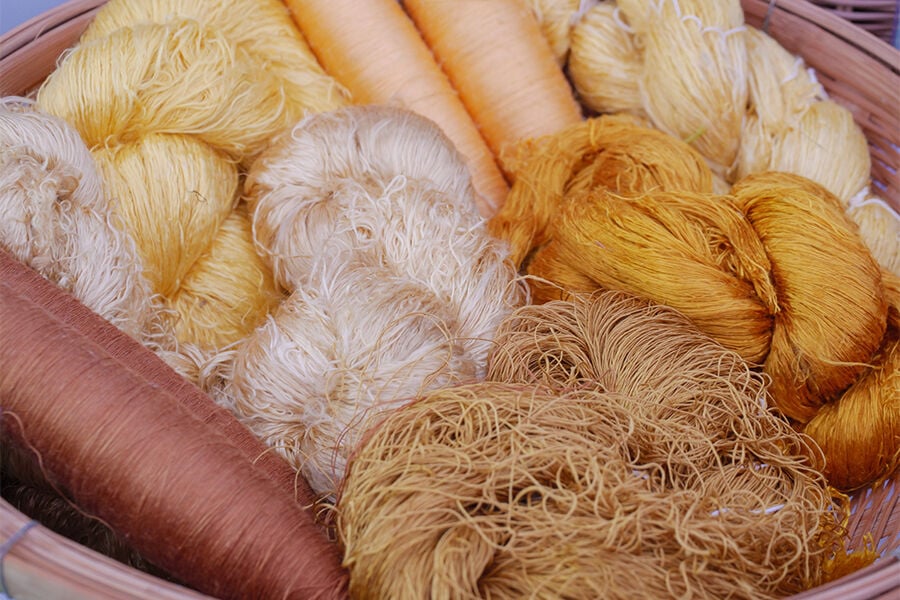
How to spot counterfeit fabrics
Recognising genuine Thai fabric involves checking for several key characteristics. Authentic Thai fabric feels warm and has a distinct, rough texture due to its natural fibres. When the fabric is held against the light, the colour changes, creating a unique, soft shimmer. Fake silk often looks uniform and synthetic. Buyers should also consider the price, as genuine Thai fabric is more expensive due to its intricate production process.
Fabric slubs, nits and bulges
Hand-woven Thai silk, especially dupioni, features slubs, nits, and bulges. These imperfections, known as slubs, indicate the fabric’s authenticity and handmade nature. Slubs are small bumps and irregularities in the weave, a hallmark of traditional Thai silk weave. They add character and uniqueness to the fabric, distinguishing it from machine-made silk, which appears too perfect.
The edges (The Selvedge)
The selvedge, or edges, of Thai silk provide another clue to its authenticity. Genuine Thai silk has a fine, almost invisible selvedge that is neatly finished. It doesn’t fray and retains integrity over time. Machine-made silk often has a rougher, less consistent edge. Inspecting the selvedge helps determine if the fabric has been produced using traditional methods.
The shimmer
Authentic Thai fabric has a unique shimmer caused by the triangular shape of the silk fibres. When held under light, this shimmer appears to change colour due to the fabric’s natural dyes and weaving technique. Counterfeit silk often lacks this quality and looks flat. Assessing this shimmer is a reliable method to identify genuine Thai silk.
Each of these characteristics—texture, slubs, selvedge, and shimmer—plays a vital role in verifying the authenticity of Thai fabric, offering a trusted guide for discerning buyers.
Quality
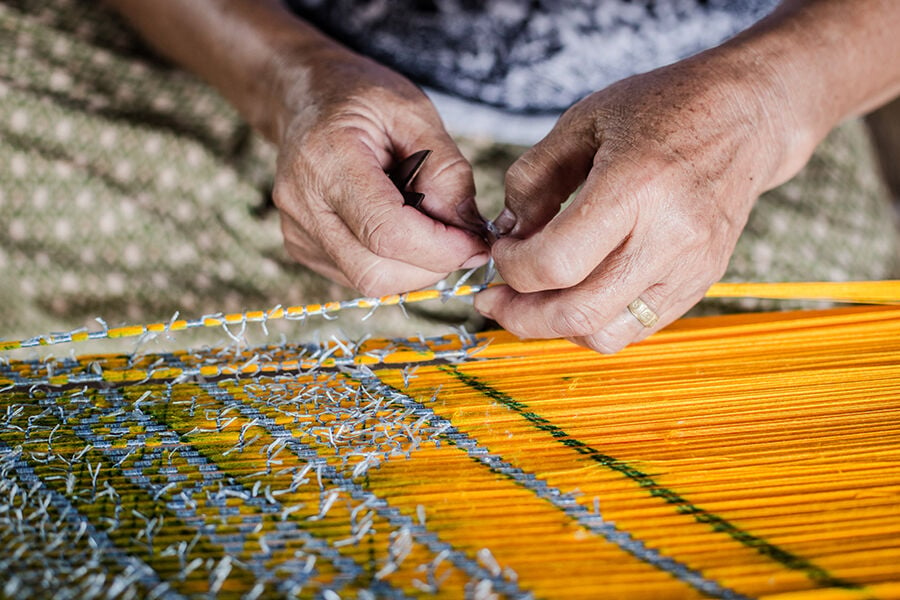
The quality of the weave
A quality piece of Thai silk exhibits a tight weave with minimal flaws. Tiny imperfections, known as slubs, add character instead of diminishing value. The consistency in design and colour is crucial for evaluating quality. For example, a brocaded weave should have a uniform pattern and replication throughout the fabric.
The type of weave
Different Thai fabric weaves vary in complexity. Brocaded silk features an intricate pattern that demands high skill, making it more prestigious. Dupioni silk, while easier to weave, includes natural slubs that contribute to its unique texture. Mudmee weaving is highly complex, often using multiple colours to create detailed patterns. The intricacy and precision of the pattern elevate the quality status of mudmee silk.
The quality of the silk yarn
Silk yarns used in Thai fabric are not equal. The finest yarns are made from reeled silk, consisting of long, unbroken filaments. These yield the highest lustre and strength. In contrast, spun silk yarns, made from leftover filaments, exhibit a duller appearance and lower strength. Quality assessment hinges on the type of yarn used, impacting the overall durability and sheen of the finished fabric.
Thai fabrics can be considered one of the most important cultures in Thailand, if you are looking for more Thai culture, we would love to recommend you check our article on ‘Thing you must know about Thai culture.‘
Latest Thailand News
Follow The Thaiger on Google News:
